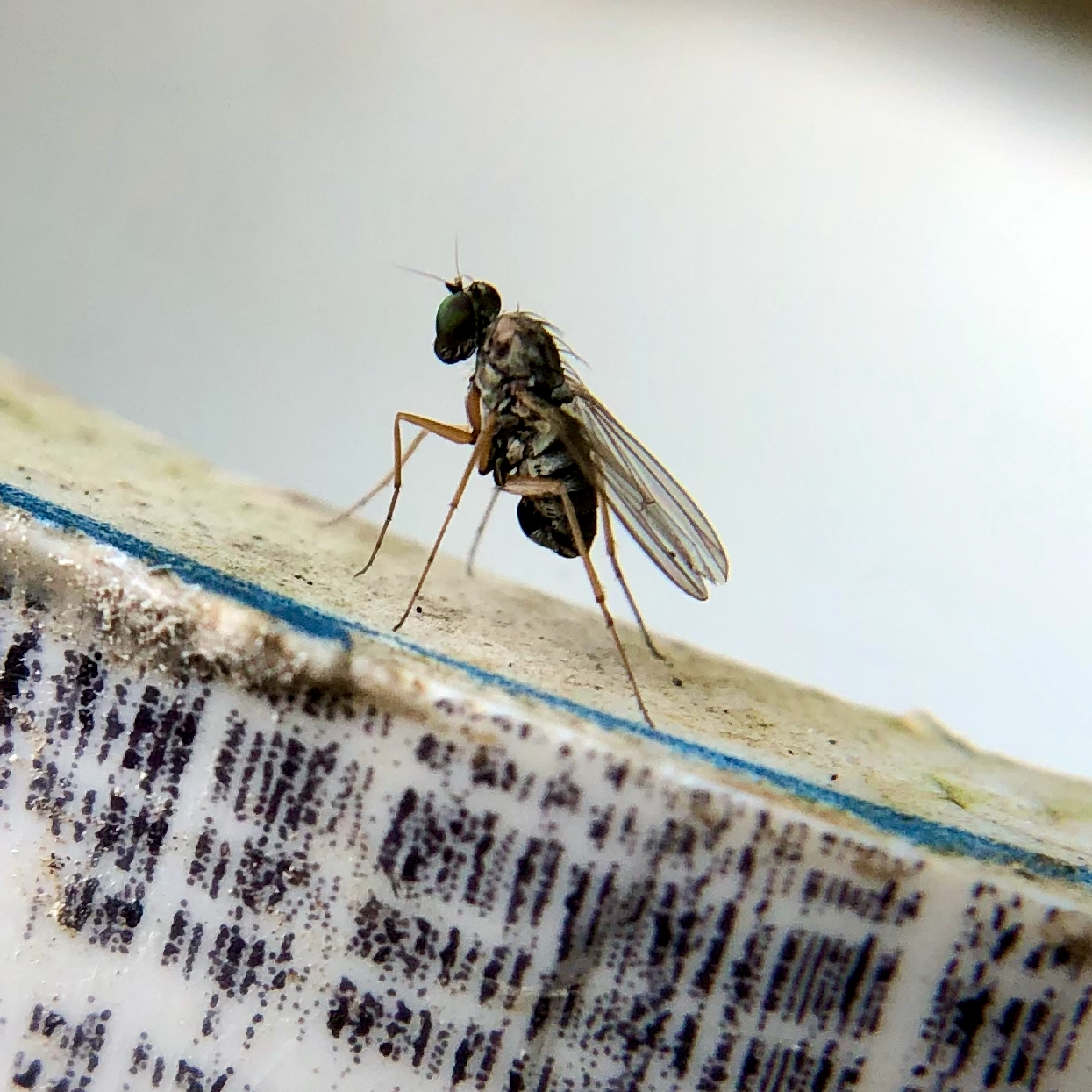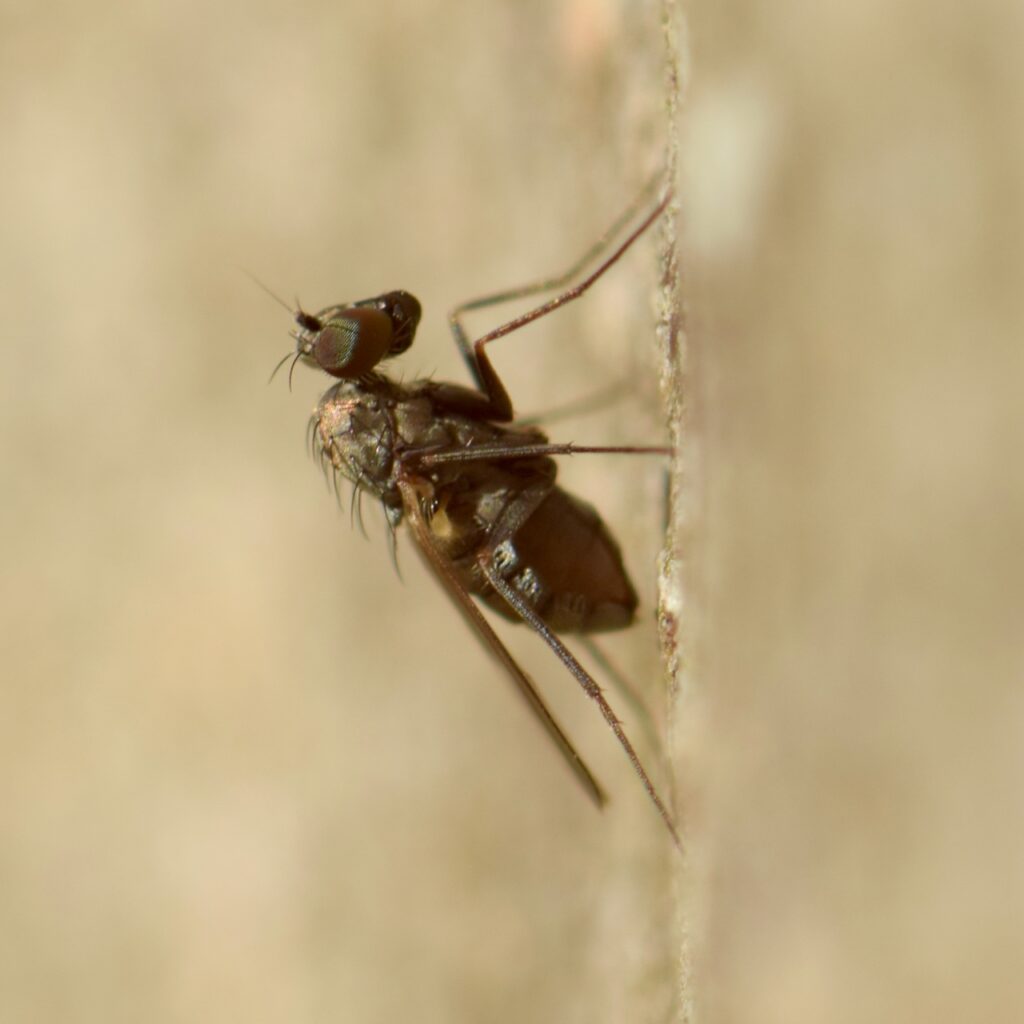If you want to learn more about today’s insect, you’d better search for its genus name, Medetera, and not its common name, Woodpecker Fly. That is, unless you’d like to read about soaring Pileated or Acorn woodpeckers.
Although they’re tiny, you can usually distinguish these predatory flies from a distance. That’s because they have a unique, upright stance on the vertical surfaces they prefer, the line of their body tracing about a 45 degree angle to the perch. Look for them on tree trunks, but also on manmade items such as the signs, bridges and structures at Mount Pisgah.

Adding to its identifiability, if that’s a word, Medetera have a long face that’s been compared to a horse’s feedbag.
But these flies don’t eat oats. Medetera are predators. As adults they eat an enormous variety of minute creatures, including springtails, flies, and aphids. As larvae, they live under tree bark and eat bark beetle larvae.
In fact, Medetera are being studied as a natural, biological control of beetles that threaten Norway Spruce. In a recent study, linked below, researchers were able to attract Woodpecker Flies by using synthetic compounds that mimicked bark beetle infested trees.
A study of a group of Medetera in Russia, also linked below, has great information about their eating and mating habits. For example, Medetera didn’t seem affected by cold or rainy weather, and are active until near dark.


Also, when they’re hunting, they position their body parallel to the tree trunk, rather than at an upright angle. I was happy to have read the paper before getting some recent photos, because I knew what they were doing when they changed their stance.
Stay curious!
See more of Karen’s work here.
Sources:
A study of Medetera in Russia: https://www.diptera.info/articles.php?article_id=12. Accessed 11/3/25.
Article that looks into Medetera predation of bark beetle larvae: https://annforsci.biomedcentral.com/articles/10.1186/s13595-024-01261-8. Accessed 11/3/25.
All photos by Karen Richards.